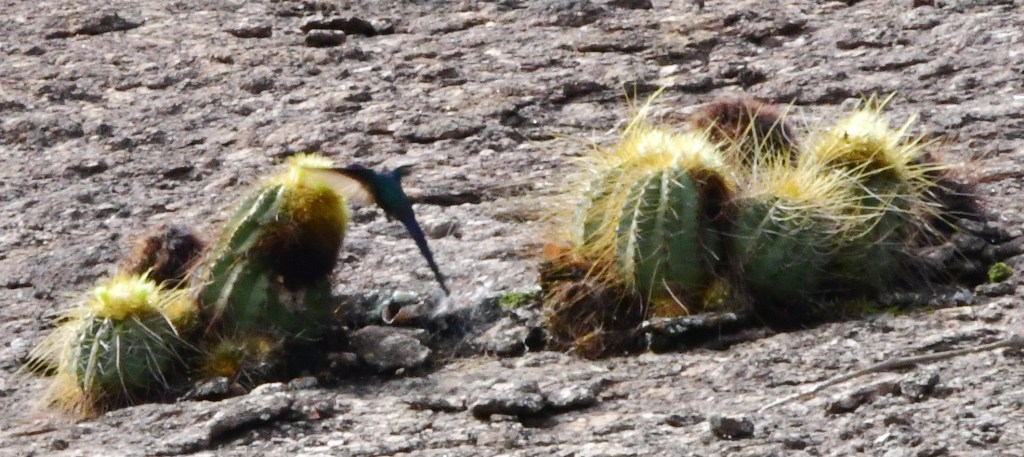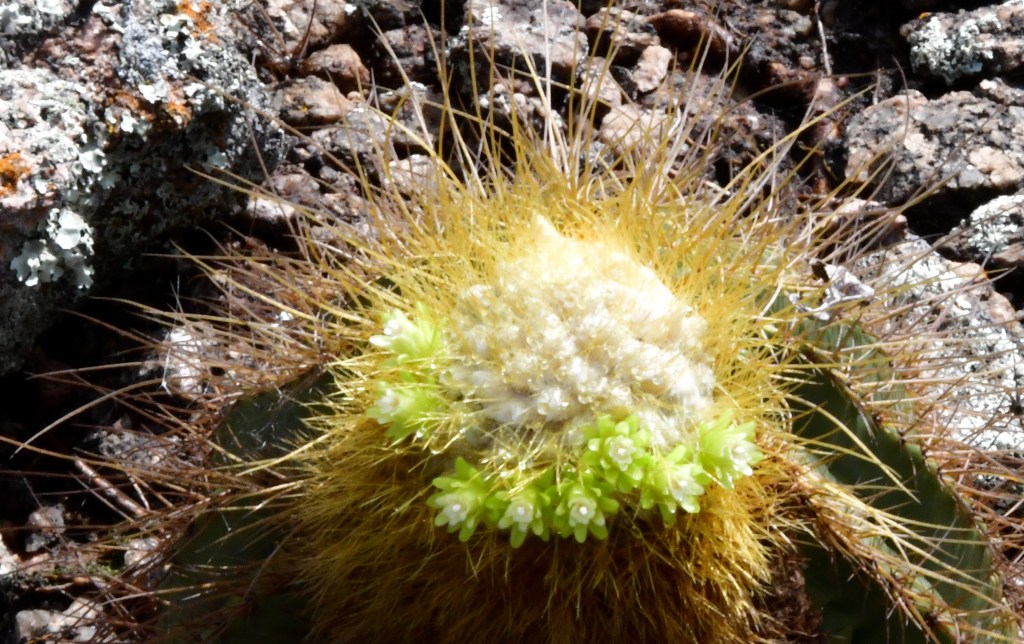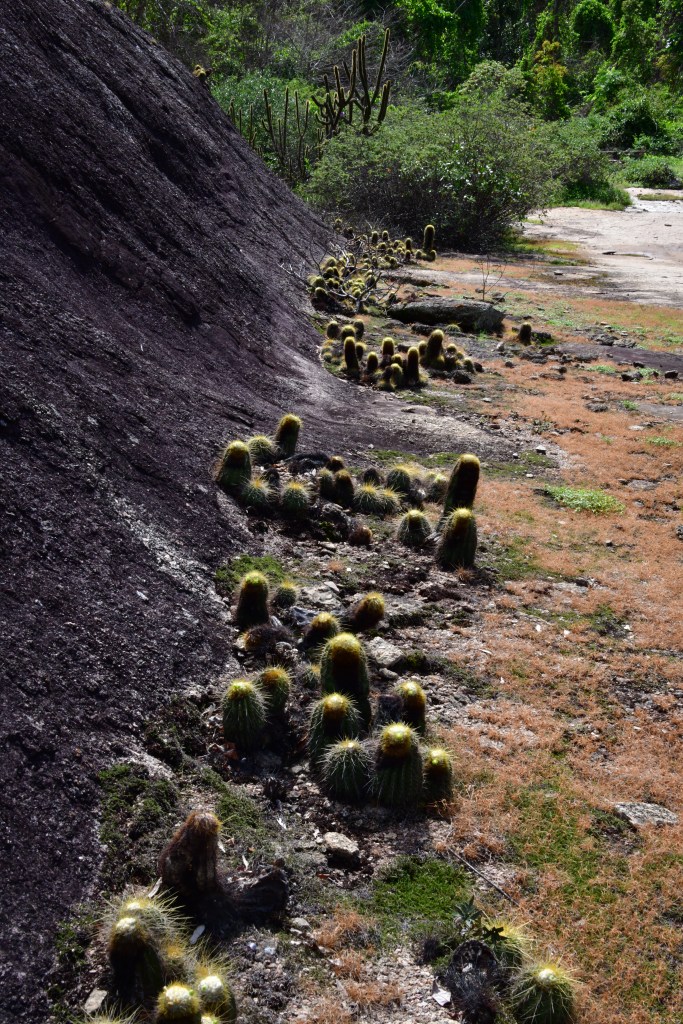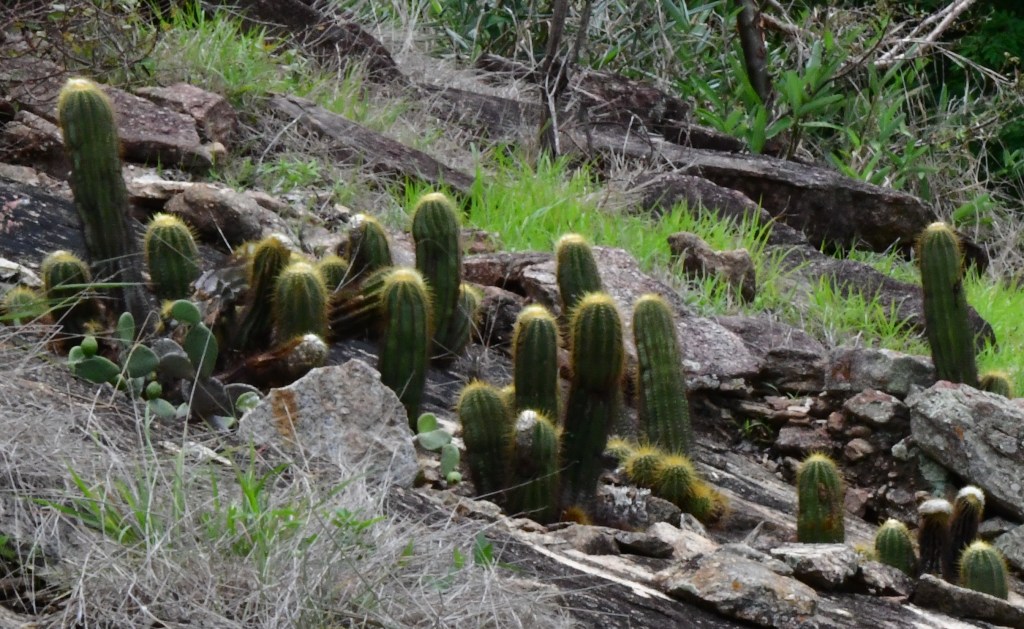Tuesday 27 November 2018 – Pedra Azul – Jequitinonha
Inselbergs are granitic or gneissic rock outcrops that are considered terrestrial islands because of their strong spatial and ecological isolation, thus harbouring a set of differing distinct plant communities. In Brazil, inselbergs scattered in the Atlantic Forest contain unusually high levels of plant species richness and endemism. Inselbergs are thought to have differing microenvironments but in the rain are all very slippery especially on the steep parts. Our interest here is that they contain differing populations of the genus Coleocephalocereus (Cactaceae).
Our first stop, S3721, was for Coleocephalocereus (Buiningia) aureus subsp. brevicylindrica. We had already seen the giant Coleocephalocereus (Simplex) goebelianus which Backeberg had ‘blessed’ with the long name that has not endeared the plant to those who need to write labels for a living! They are therefore often still seen under the name Buiningia.

Young plants are hard to distinguish from similar sized Melocactus. Once the lateral cephalium forms it becomes much easier to distinguish the genera as Melocactus has a terminal apical cephalium while Coleocephalocereus has a lateral cephalium. Both genera are pollinated by hummingbirds.
‘Buiningia‘ are said to contain just two species: the yellow flowered C. aureus and the purple flowered C. purpureus. But there are some subspecies that deserve recognition, if only in cultivation: C. aureus subsp. brevicylindricus and C. aureus subsp. elongatus that in nature are respectively shorter and taller than subspecies aureus. We were fortunate to see all of these taxa.

S3722 was another population of Buiningia aurea subsp. brevicylindrica, but the sides of the inselberg were much too steep for us to climb them to inspect the plants. It seems that the berries did not like the steep slopes either and rolled downhill to collect along the base of the rock.


S3724 was for the almost inevitable second puncture, this time for John & my car. The other car, with Alain, Chris and Marlon inside raced on, oblivious to our flashing lights and honking horn. Eventually, after John had changed the tyre, they returned rather sheepishly. Did you not hear us or see our flashing lights? Sorry, we were listening the the Electric Light Orchestra at full blast was their poor excuse! So much for team work!
There were more Buiningia at S3725. Here the stems were a little taller. B. aurea subsp. aurea?

S3726 was a stop along the side of the track for a huge, 30 cm diameter flower, appearing in the shrubs growing along the track: Aristologia gigantica!
There were more Buiningia at S3727, as well as Tacinga inamoena and various Bromeliaceae; Pereskia at S3728 and Melocactus sp. at S3729.
